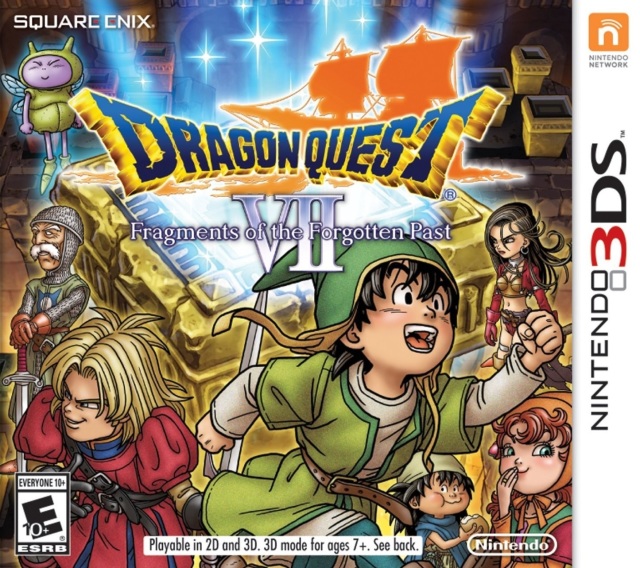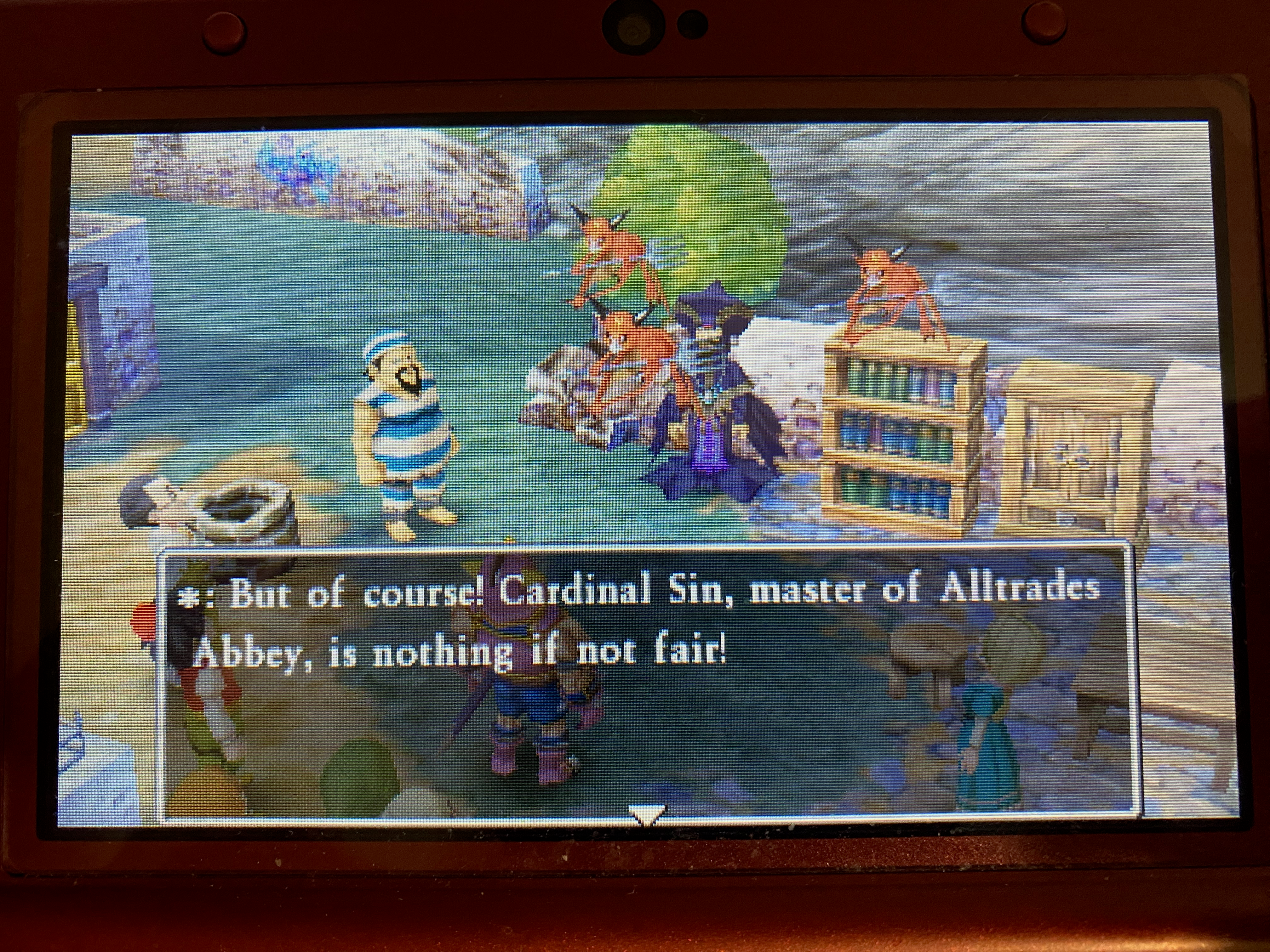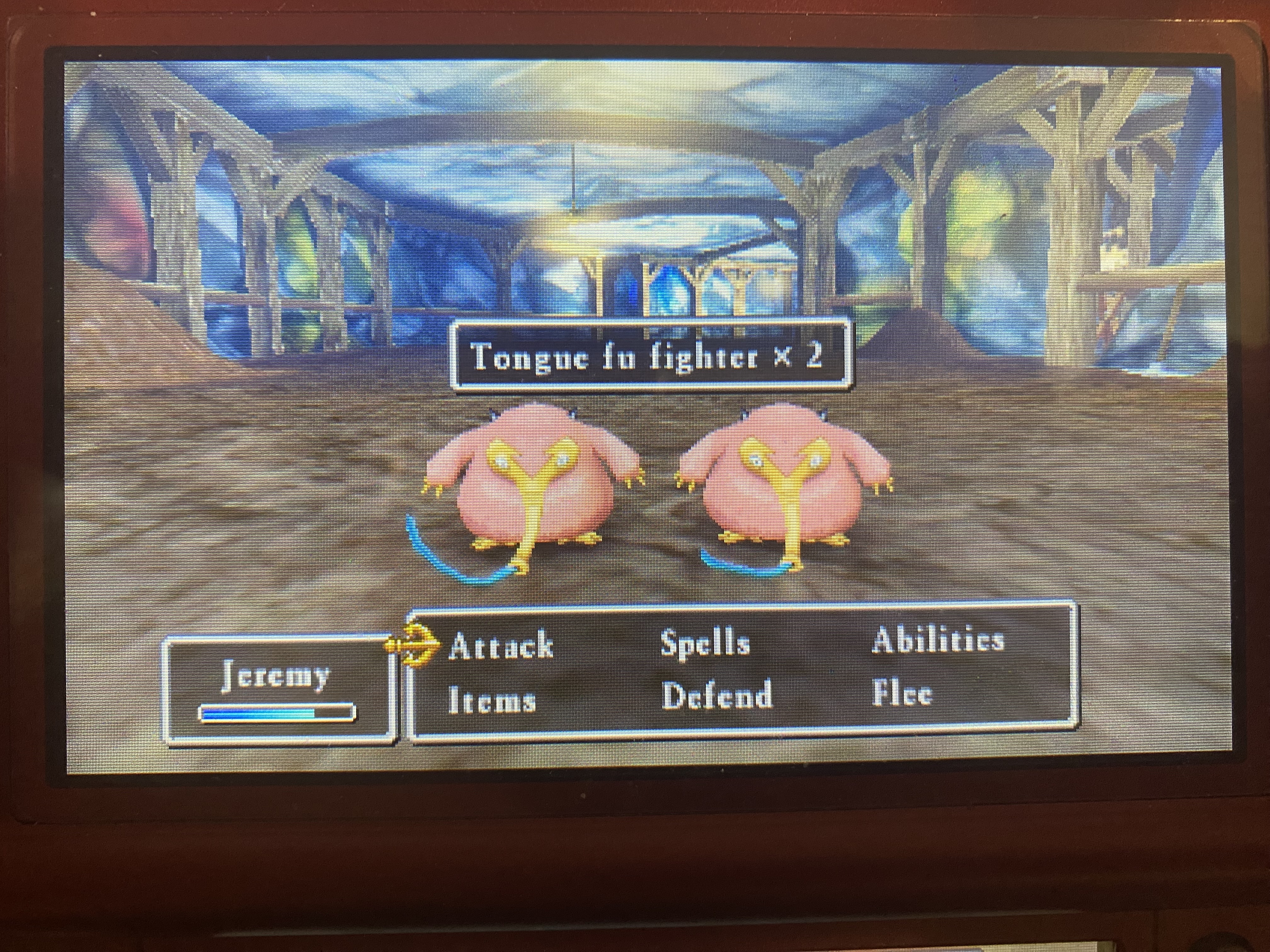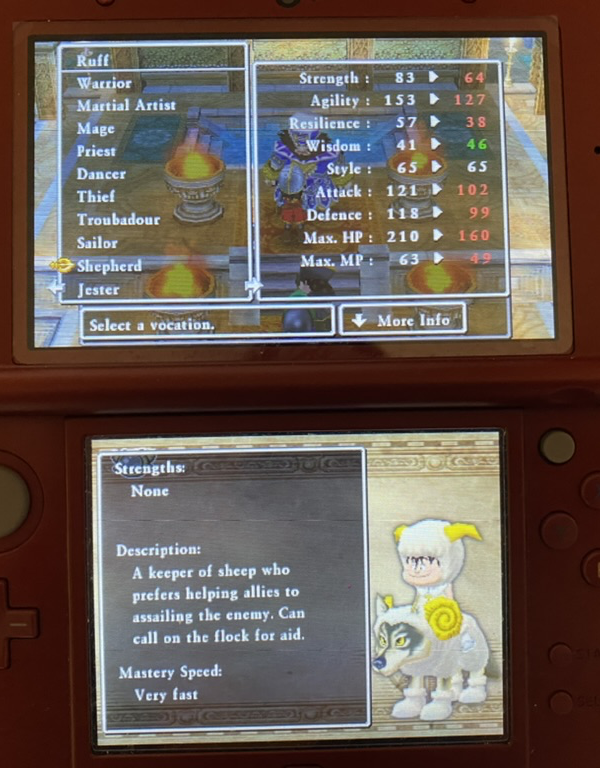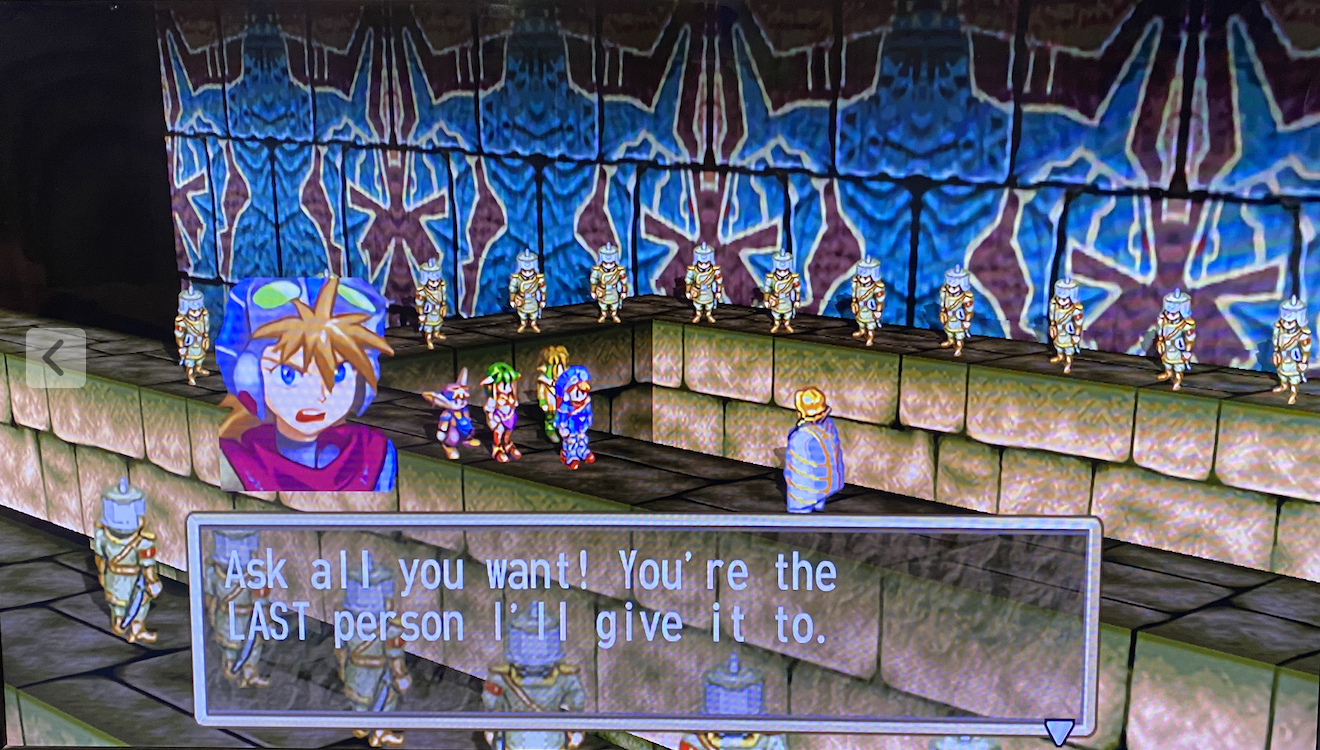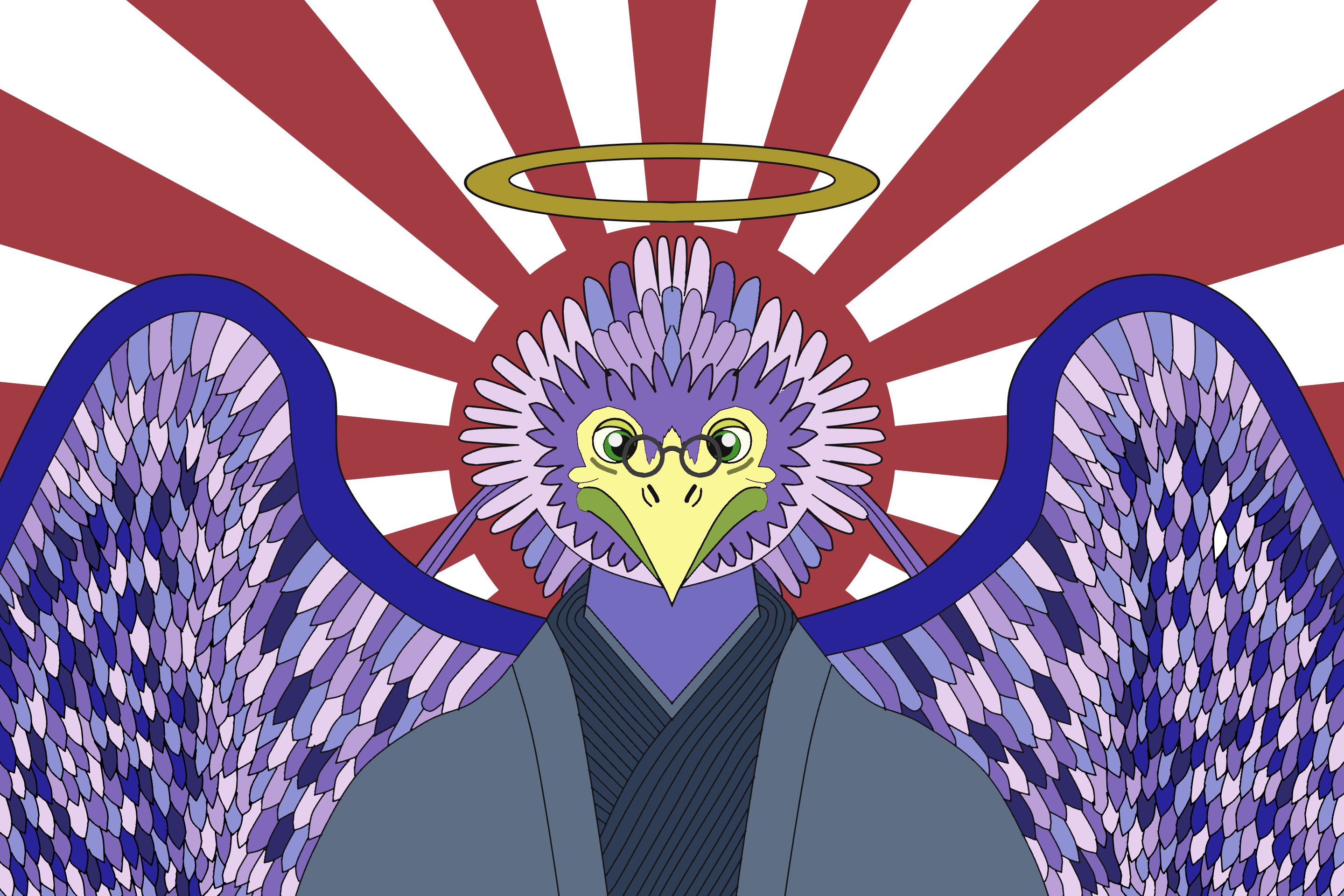
A Horse and Her Toad
Later sales for new installments, however, would suffer, including the remakes of the Zenithian trilogy --games four through six--for the Nintendo DS, to the point where the first English version of the sixth entry was almost canceled, until the Big N took over translation duties. Although they would localize Dragon Quest IX to modest success, thanks to backing by the likes of Seth Green, most spinoffs would remain untranslated, the apparent fate of further rereleases. The seventh title proved an exception, as did the 3DS port of the eighth, which features many changes to make it worth a look from fans and newcomers alike.
The eighth entry focuses on the subtitular cursed king, Trode, bewitched to the form of a small troll alongside his daughter, Princess Medea, vexed to an equine form serving as the party's chief transportation mode on the overworld. The perpetrator is a jester named Dhoulmagus, who receives additional backstory when the player later returns to the game’s initial town, the only unscathed survivor of his infestation of Castle Trodain with a sealed wand's vines being the silent protagonist, perhaps one of the most developed of that particular breed of hero, who receives supplemental background in one of the extra dungeons.
A brute named Yangus, a sorceress named Jessica, and an exiled templar named Angelo join the party, with Yangus's former fling Red recruitable now, alongside monster arena boss Morrie. The cast is generally likeable, and the main plot is initially strong, taking some unique twists partway through the game. There is a bit of resemblance to The Legend of Zelda: A Link to the Past regarding some of the backstory, and there are many dumb scenes, fetch quests, and frequent bad directions on where exactly the hell to go to advance the main narrative. However, the plot wraps up nicely regardless of which ending the player decides to get, two initially accessible and the other two after finishing part of the postgame content. The story generally holds up well even today.
The original PlayStation 2 release of Journey of the Cursed King initiated a series tradition where the dialogue receives an ethnic flair depending upon the region of the world, with ethnicities such as the Russians receiving representation. The English are the dominant "culture" of the game's world, with words in dialogue having British spelling such as "honour." There are some occasional noticeable hiccups in the translation, such as women occasionally being addressed as "sir," and AI-controlled NPCs that occasionally and temporarily join the player's party having incorrect names within the battle dialogue. A few of the dialects, furthermore, are somewhat irritating, such as those of Tom the cat guy and Princess Minnie, alongside other annoyances of Japanese RPG dialogue like spelling out snoring such as "Ah-fooo." In the end, the translation is good, but can sometimes be distracting.
One improvement over the original game is that players will glimpse early on is that all enemies, not just those recruitable into two three-member monster teams, are visible to encounter on fields and in dungeons, but regardless of how the player's visible character contacts them, how the initiated fight actually commences is pretty much random, the player's party sometimes getting initiative and the enemy party other times gaining the upper hand. Despite this irritant, this makes grinding with specific enemies easier, such as with the ever-elusive metal enemies providing exponential experience for occasional level-ups, and there is a special hill accessible late-game with some providing easier leveling, with the right skills.
Fights follow the typical structure of traditional turn-based combat, where the player inputs commands for the party of up to four characters--two sitting on the sidelines if the player recruits the pair of characters new to the rerelease--and they and the enemies execute commands against one another for a round, with turn order mostly depending on agility, although there is frequent randomization, and common occasions where the player intends to heal a dying character, only for the ally to die before healing reaches them. A spell, however, can increase agility for the whole party, oftentimes lessening these situations.
Victory comes when the player vanquishes the enemy party, netting them experience, money, and the occasional dropped item, though item drops tend to have low rates. If the enemies kill the player's active party, however, they revive at the church they last saved at with full health and half their money lost, although one can lessen this financial blow by banking money in thousand-coin increments. Whenever characters level up, they gain a handful of points the player can invest into five different skill trees for each character, the remake showing how many points are necessary to obtain a new ability or special benefit such as supplemental attack power with a specific weapon type.
Although players can level their characters up to 99, which isn't too big a hassle especially with certain exploitations of metal enemies, they will not acquire enough skill points to max out all their skill trees, with supplemental points acquired only through Seeds of Skill, randomly dropped by specific enemies, with farming, as implied, being somewhat difficult. Thus, the player will need to be careful in plotting their characters' skill paths, considering factors such as how often they'll use magic, which weapon types have the best skills, whether a character will acquire attack-all abilities from innate leveling instead of their skill trees, and so forth.
Even skill trees that seem at first trivial, like Fistcuffs for barehanded combat, may have at least one useful ability, making skill development a daunting task. Other than using human characters to fight, the player can summon one of two three-monster teams to execute random attacks against the enemy for a few rounds, monsters dead by this method revivable only at Morrie's monster arena. The battle system definitely works, although the tradition of mostly-random turn order is still bothersome, alongside the inability to access vanguard characters during most battles within dungeons, and fights can still drag on even with the fast mode activated, only marginally heightening combat speed. Even so, while there are some hitches, the gameplay helps the eighth entry more than hurts.
The 3DS version negates some of the "improvements" made to the PlayStation 2's North American version, such as the cumbersome pictorial interface in lieu of the more traditional text-based menu system series enthusiasts are used to. Furthermore, alchemy to produce new items from inferior ones has received significant streamlining, with fusion occurring instantaneously instead of after a certain number of steps the player takes across the overworld and through dungeons. One particularly helpful feature is that after the player selects one item to use in synthesis, the game darkens all items with which they cannot combine the initial ingredient, which saves plenty of time and trouble.
However, shopping is still a hassle like in other Dragon Quests given the frequent dialogue and confirmations when doing so. The direction on how to advance the central storyline, as mentioned, is poor to the point where I had to search endlessly on the internet. While manual saving at churches can take some time as with other entries, the player can anytime outside combat make quicksaves while still continuing the game, or quit without making another quicksave, which can come in handy when doing things such as gambling at one of the two casinos. There are other annoyances like NPCs getting in your way and no labels of towns or dungeons on the overworld map, and the eighth entry could have interfaced better with players.
The late Koichi Sugiyama did a great job with the soundtrack, with plenty of neoclassical pieces such as the overworld theme, but he did dabble in different genres with the casino and bar themes, reused from prior Dragon Quests. The eighth entry was further the first to feature voice acting, with most characters having foreign accents and dialects, but I personally found many of them really irritating--some actors with "neutral" dialects would have been welcome, akin to Disney's Robin Hood, which still featured ethnic performers. Moreover, the main battle theme doesn't last for more than a minute and frequently loops if battles drag on, and the digitized sounds from prior series entries abound in combat and cutscenes. Still, the sound is one of the game's high points.
However, the visuals received a downgrade from the PlayStation 2, the portable version not utilizing the 3DS's three-dimensional capabilities at all. The cel-shaded character and enemy models still look nice, with the late Akira Toriyama doing a remarkable job in fleshing out his designs, but the scenery often appears with blurry texturing, and there's plenty of environmental popup when the player is navigating the overworld. In the end, the visuals are at best average.
Finally, the experience is still lengthy, with playtime able to last somewhere from fifty to a hundred hours, given the endless post-game content, compendia completion, and sidequests that can pad the player's experience infinitely.
In conclusion, Dragon Quest VIII for the Nintendo 3DS is for the most part an enjoyable port, with plenty going for it such as the battle and skill systems, the strong story, the nice soundtrack, and plentiful content to pad the experience infinitely. There are, however, occasional strikes against it such as the retention of some series traditions in and out of battle, the derivative nature of the plot part of the ways in, the translation incongruities, and the visual downgrade, although those that haven’t played the PlayStation 2 version will most likely relish at this experience, so long as they don’t mind its length.
The Good
- Good combat.
- Enjoyable story.
- Great soundtrack.
- Plenty lasting appeal.
The Bad
- Some traditions are bothersome.
- Plot is a little derivative later on.
- Some translation incongruities.
- Graphical downgrade, with no 3D.
The Bottom Line
A good game but not one of the franchise's high points.Score Breakdown
Platform: Nintendo 3DSGame Mechanics:7.5/10
Controls: 3.0/10
Story: 7.5/10
Localization: 6.5/10
Music/Sound: 9.0/10
Graphics: 5.0/10
Lasting Appeal: 7.5/10
Difficulty: Moderate
Playing Time: 3+ Days



